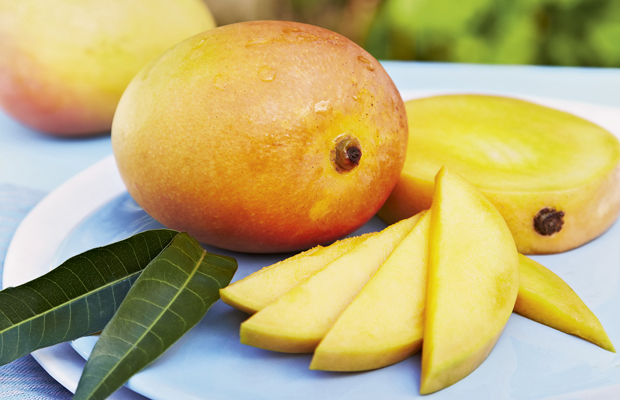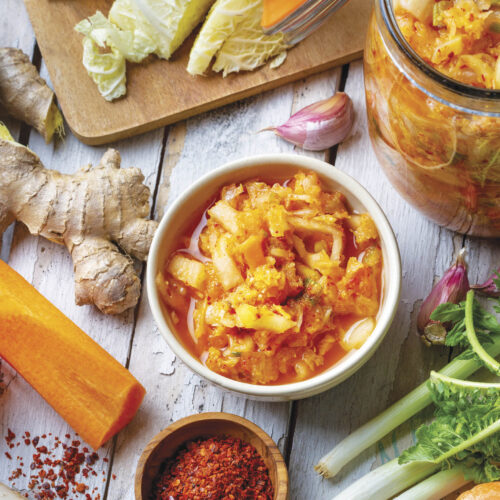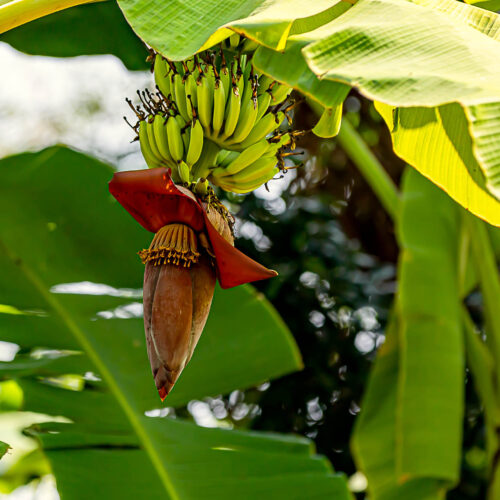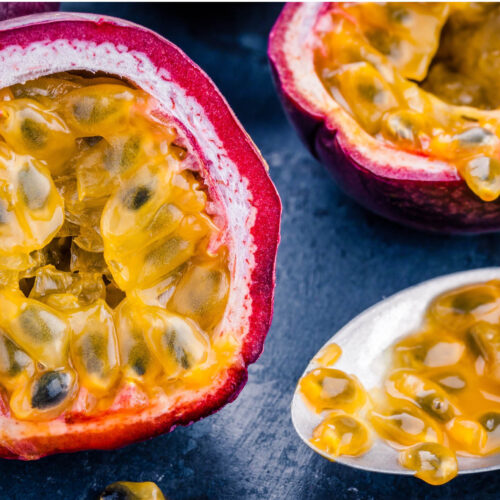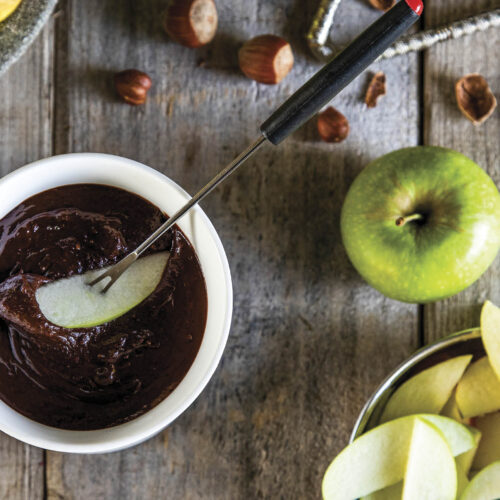Freezing fruit
2016-12-07T19:45:33+11:00
Freezing fruit is a great way to enjoy their seasonal abundance all year round.
Fruit should be frozen when just ripe and in prime condition, as soon as possible after picking.
PREPARING FRUIT
Work with small amounts of fruit to prevent spoilage. It is best not to add spices to fruit before freezing as the flavour of the spices is greatly diminished.
Generally, freezing fruit with a sugar syrup or dry sugar is of better quality, although this is by no means a necessity.
Note: Fruit to be frozen and used in preserves should never have sugar added to it.
Sugar syrup
The quantity of sugar can vary according to taste and the type of fruit used.
- 250g (9oz) sugar
- 2 cups water
Combine the sugar and water in a saucepan over medium heat and bring to the boil, stirring until the sugar has dissolved. Allow to cool before use. For each 1kg (2lb 4oz) of fruit, use about 1 cup of cold sugar syrup.
Dry sugar
The amount of dry sugar recommended for freezing fruit is 250g (9oz) for each 1kg (2lb 4oz)) of fruit. Carefully mix the sugar through the fruit before packaging for the freezer.
Some fruit, such as apples, apricots, peaches and nectarines, discolour during preparation and/or freezing. To help prevent this, try one of the methods below.
Ascorbic acid powder
Add this powder (obtained from good home-brewing shops) to the fresh fruit, fruit puree or sugar syrup.
For fresh fruit, mix ¼ teaspoon of ascorbic acid powder with ¼ cup cold water and stir to dissolve. This amount can be mixed into 1kg (2lb 4oz) of fruit before placing in airtight containers or bags and freezing.
If using a sugar syrup to cover fruit for freezing, then add ½ teaspoon of ascorbic acid powder to each 1 litre (35fl oz) of sugar syrup used.
Citric acid or lemon juice
Mix 1½ teaspoons of citric acid or 3 tablespoons of lemon juice into each 1 litre (35fl oz) of water. Dip the fruit into the solution, drain well and pat dry with paper towel before freezing.
Steam blanching
To steam blanch, place the fruit in a steamer basket over a saucepan of boiling water. Cover with a lid and steam for 3 minutes.
Preparing fruit for freezing
| Apples | Peel, core and slice. Scald in boiling water, then plunge into iced water. Drain and pat dry, then pack with dry sugar or sugar syrup |
| Apricots | Peel if desired by dipping in boiling water for 20 seconds, then plunge briefly into iced water. Halve and remove stones. Use dry sugar or sugar syrup with ascorbic acid, citric acid or lemon juice |
| Bananas | Freeze whole with or without skins or mash and add 1 tablespoon of lemon juice for each cup of puree |
| Berry fruits | Tray freeze individually before packaging or use dry sugar or sugar syrup |
| Cherries (sour and sweet) | Freeze whole or pitted. Tray freeze in a single layer, then place in containers. Alternatively, pack in sugar syrup with ascorbic acid or lemon juice added |
| Citrus fruits | Wash, peel and segment. Sprinkle with dry sugar to taste and allow to stand for 2 hours. Pack into containers and freeze |
| Cranberries | Tray freeze in a single layer, then pack in freezer containers. Do not add sugar |
| Currants (red, black and white) | Remove stems, wash in cold water. Drain well. Freeze in a single layer on trays before packaging |
| Feijoas | Peel, wash and remove pips. Freeze whole, halved or pureed. Add ascorbic acid powder, citric acid or lemon juice to prevent discolouration |
| Figs | Try to freeze no more than 12 hours after picking. Remove stems, peel and slice. Freeze in sugar syrup with ascorbic acid added |
| Grapes | Wash and dry. Freeze in a single layer on trays before packaging. Do not add dry sugar. Use sugar syrup, if desired |
| Guavas | Texture changes with freezing. Wash, peel, halve and remove seeds. Freeze halves or puree. Best preserved in sugar syrup |
| Kiwi fruit | Peel and freeze whole, cut into slices or puree. For slices, freeze in a single layer on trays before packaging |
| Loquats | Wash, remove stems, blossom ends and seeds. Cover with sugar syrup and freeze |
| Lychees | Wash and freeze with skin on. Alternatively, peel, cut in half, remove pip and freeze in containers in sugar syrup; |
| Mangoes | Use just-ripe fruit. Peel and remove stone, cut into slices and freeze in sugar syrup. Alternatively, puree the mango flesh and freeze |
| Melons | Peel, remove seeds and cut into cubes or balls. Freeze in sugar syrup |
| Peaches/nectarines | Dip in boiling water for 20 seconds then plunge briefly into iced water to remove skins. Peel, remove stones, slice and pack in sugar syrup with ascorbic acid added |
| Pears | Wash, peel and core. Slice into 8 sections. Dip in boiling sugar syrup. Drain, cool and pack in sugar syrup with ascorbic acid added |
| Persimmons | Freeze whole or make a puree (add ¼ teaspoon ascorbic acid or 3 teaspoons citric acid per 2 litres (70fl oz) of puree) |
| Pineapples | Peel and core, dice, slice or cut into chunks. Pack in sugar syrup or dry sugar |
| Plums | Wash. Leave whole or halve and remove stones. Pack in dry sugar or sugar syrup with lemon juice, citric acid or ascorbic acid added |
| Pomegranates | Halve and push out seeds. Freeze in small containers |
| Quinces | Peel, quarter, steam or blanch for 3 minutes, plunge briefly into iced water, and tray freeze before packaging |
| Rhubarb | Choose well-coloured red stalks. Remove leaves and tough stalks. Cut stalks into 2.5cm (1in) pieces. Do not blanch. Pack with or without dry sugar |
Hint: For future jelly making, cook the fruit and strain off the juice using the jelly making procedure, then freeze the juice in containers. The fruit jelly can later be prepared by thawing this juice, adding sugar and boiling until setting point is reached.
PACKAGING FRUIT
Fruit can be frozen in freezer bags or containers. For freezer bags, place the fruit in the bag, allowing 1.5cm (? in) headspace, and insert a plastic drinking straw into the space around the fruit. Squeeze the neck of the bag in around the straw and suck out the air, remembering to allow for headspace (this is necessary as the fruit expands as it freezes). Remove the straw, pinching in the top of the bag and fasten immediately with the bag tie. For containers, fill with fruit to within 1.5cm (? in) of the top, then cover with the lid.
For free-flowing product, fruit (whole, sliced or diced) can also be tray frozen. The prepared fruit is placed on a tray in a single layer, sprinkled with sugar (optional) and frozen. Pack into bags or containers as soon as it is frozen (extended exposure results in loss of moisture). It is not necessary to leave headspace.
Place the bags or containers in the coldest part of the freezer. Allow 2.5cm (1in) around each package for faster freezing. Once the food is frozen, the packages can then be placed tightly
together.
Frozen fruit will keep, stored at -18°C (0°F) or lower, for 8–12 months. It is highly advisable to buy a fridge/freezer thermometer so that this can be monitored—the cost is minimal.
Note: Freezer burn is caused by exposure to air. It affects the texture of the fruit and to some extent the flavour. The fruit isn’t unsafe to eat, but it may be dry, leathery and discoloured. Cut out these portions before using. To avoid freezer burn, ensure that all air is removed from the packaging before freezing.
From Complete Preserves by Sally Wise, ABC Books/HarperCollins.

